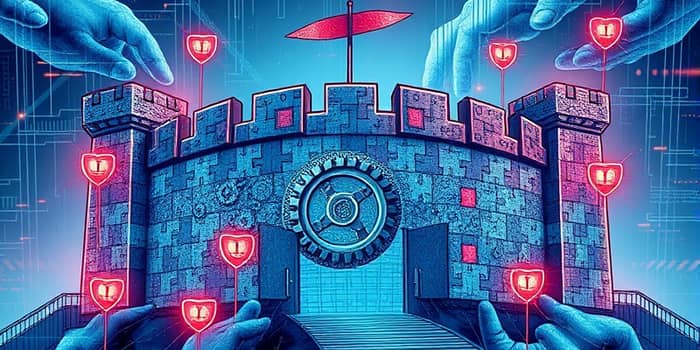In today’s volatile business environment, organizations must adopt a systematic approach to identifying and mitigating threats. A structured risk framework empowers leaders to foresee challenges and safeguard assets.
Definition and Importance of a Risk Framework
A Risk Management Framework (RMF) is a disciplined method for identifying, assessing, controlling, and monitoring potential threats to an organization’s objectives. This framework ensures that leaders can address vulnerabilities before they materialize into costly incidents.
The primary purpose of risk management is to protect people, reputation, and revenue while maintaining regulatory compliance and stakeholder trust. By aligning risk activities with corporate goals, companies grow more resilient and agile even in times of crisis.
According to the 2022 PwC Global Risk Survey, organizations with mature ERM frameworks report 30% fewer loss events and faster recovery times. More than 3,500 professionals cited robust frameworks as critical for navigating uncertainty.
Core Steps and Elements in Building a Risk Framework
Building a comprehensive risk framework involves seven interconnected phases, often adapted from ISO 31000, COSO ERM, and NIST guidelines.
- Risk Identification: Systematically uncover existing and emerging threats across operations, compliance, strategy, and technology.
- Risk Assessment: Evaluate likelihood and impact using qualitative and quantitative metrics, including impact/likelihood matrices and historical data.
- Risk Management Planning: Develop actionable response strategies with resource assignments, risk owners, and clear timelines.
- Controls Implementation: Operationalize preventive and detective controls—technical, administrative, and procedural—to mitigate prioritized risks.
- Ongoing Monitoring: Track changes in the risk environment and test control effectiveness through audits, reviews, and automated dashboards.
- Reporting and Communication: Document risk activities, share insights with stakeholders, and cultivate a risk-aware culture across all levels.
- Review and Adaptation: Periodically reassess and refine the framework to address new threats and organizational shifts.
In information security contexts, the NIST RMF further breaks down these phases into Categorization, Control Selection, Implementation, Assessment, Authorization, and Continuous Monitoring—each reinforcing a cycle of continual improvement.
Best Practices and Success Factors
Successful frameworks rely on strong governance, measurable objectives, and cultural integration. Here are key success factors drawn from global best practices:
- Clear risk management objectives linked directly to strategic priorities and risk appetite.
- Executive sponsorship and active engagement to secure resources and foster accountability.
- Dedicated governance structure with defined roles, decision-making protocols, and cross-functional committees.
- Automated continuous control monitoring systems powered by AI-enabled dashboards and GRC platforms.
- Integrated workflows that embed risk activities into routine business processes, from procurement to product development.
- Regular training and awareness programs to reinforce a culture where risks are openly discussed and managed.
Types of Risks to Address
Comprehensive risk frameworks must encompass a spectrum of risk categories to ensure no vulnerability is overlooked.
- Strategic Risks: threats to competitive positioning, product launches, and market expansion.
- Operational Risks: system failures, process breakdowns, human errors, and supply chain disruptions.
- Compliance Risks: breaches of legal, regulatory, and contractual requirements (e.g., GDPR, SOX, HIPAA).
- Financial Risks: credit, market, liquidity, and inflation-driven value erosion.
- Reputational Risks: events that damage brand trust, public perception, or stakeholder confidence.
- Cybersecurity and Data Risks: data breaches, unauthorized access, and advanced persistent threats.
- Third-Party/Vendor Risks: dependencies on external providers that may compromise operations or compliance.
Framework Models and Industry Standards
A variety of established models guide organizations in structuring their risk programs:
Industry-Specific Considerations
While core principles remain consistent, each sector faces unique challenges that shape framework customization:
Financial Services: Intensely regulated, with stringent privacy and capital adequacy requirements. Emphasis on stress testing and scenario analysis.
Healthcare: Protecting patient data under HIPAA, ensuring operational continuity in clinical settings, and managing equipment failures.
Critical Infrastructure: Securing physical assets and industrial control systems against sabotage and cyberattacks to maintain essential services.
Cloud and IT: Addressing risks associated with cloud migration, third-party services, and rapid technology adoption through regular access reviews and configuration management.
Emerging Trends and Technologies
Innovation in risk management is accelerating, driven by advanced analytics and interconnected systems.
AI-driven predictive analytics uncover hidden patterns and enable proactive risk mitigation rather than reactive response.
Workflow automation for compliance and incident reporting reduces manual workload and enhances consistency.
Cross-functional enterprise-wide risk oversight breaks down silos, aligning compliance, security, and strategy under a unified governance model.
Challenges in Implementation
Organizations often encounter hurdles when rolling out comprehensive risk frameworks:
Complexity and change management: Integrating new processes into established routines and adapting to evolving business models.
Data and resource limitations: Gathering reliable data for accurate assessments and securing skilled risk professionals.
Regulatory landscape: Navigating varied and shifting compliance requirements across jurisdictions.
Cultural resistance: Overcoming reluctance to change and embedding risk conversations into everyday decision-making.
Measurement and Maturity Assessment
Tracking progress and maturity is critical to demonstrating value and guiding continuous improvement.
Key performance indicators might include incident frequency, time to detect and respond, percentage of controls tested, and compliance audit findings.
Utilize maturity models like RIMS RMM to benchmark current practices and set targets for development from initial to optimized stages.
Organizations that integrate data-driven decision making with AI-powered monitoring report faster incident resolution and over 25% greater risk reduction, according to the latest PwC insights.
References
- https://zurichresilience.com/knowledge-and-insights-hub/articles/risk-management-strategies
- https://www.zluri.com/blog/risk-management-framework
- https://www.wrike.com/blog/risk-management-framework/
- https://bigid.com/blog/risk-management-framework-what-is-rmf/
- https://auditboard.com/blog/step-building-grc-framework
- https://www.fraud.com/post/risk-management-framework
- https://www.trueprojectinsight.com/blog/strategic-cio/erm-framework
- https://www.sentinelone.com/cybersecurity-101/cybersecurity/what-is-risk-management/










